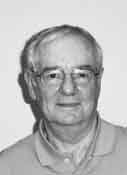 | John Rawson, Consultant, is part of the team of Wichita sales staff and RF radio technicians that is grouped with shops located in Lincoln and Omaha, Nebraska. FirstWireless, Inc. offers client consultations and demos, service, maintenance and installation, radio rentals, FCC licensing, GPS tracking and warranty administration. FirstWireless, Inc. specializes in the sales, service and rental of two-way radios, accessories and applications.
As a Premier Service Partner with Motorola, the trained sales staff and radio technicians keep customers up-to-date with the most current technical advances in radio systems and devices. Visit www.firstwirelessinc.com for more information or call at (316) 265-2290. |
Electronics
2010-10-01 10:11:00
Why digital two-way radios? (series part 4)
Question: Why digital two-way radios?
Answer: By migrating from analog to digital two-way radio communications, the communication needs of many organizations can have a strong technical foundation for adding new functionality to meet new needs in the future. Let’s explore how digital radio technology can support a more responsive and adept mobile team.
Need: Improved fundamentals, including voice quality, privacy, battery life and additional features – Part 1
Professional two-way radio users depend on clear, unbroken, reliable voice communications. A missed call, user error, garbled message, or dead battery can mean lowered productivity, wasted time and money, unsatisfied customers, and lost business.
Due to the inherent nature of RF physics, analog radio can suffer from several limitations that affect the range and clarity of voice. In an analog system, everything in the environment that disrupts or interferes with the signal itself directly impinges on the voice quality at the receiving end. Although it’s possible to boost and retransmit a degraded signal, there’s no way to reconstitute the original voice quality. The most common result of this degradation is an increase in static and artifacts that makes the signal increasingly unintelligible as the user approaches the margins of the radio’s effective range.
Signal strength falls off exponentially as the distance from the transmitter increases, following the inverse square law. At the same time, the background RF “noise” level remains constant, so the signal-to-noise ratio declines by a factor of four with each doubling of the distance between transmitter and receiver. Environmental factors — such as line of- sight obstacles and RF interference — can also severely degrade performance, further shortening the effective range at which analog radio performs with acceptable voice quality.
The only way to retain analog voice quality at the edge of the radio’s effective range is to boost signal strength. But this quickly becomes impractical due to the added battery size and drain, the risk of cross-talk and other interference, and regulations governing radio power and spectrum use in various applications. Moreover, techniques that are applied to the analog transmission — such as compounding or voice scrambling for security — alter the quality of the voice signal itself, coloring the sound and adding artifacts that can make it difficult to understand what’s being said.
Digital systems, by contrast, incorporate built-in error-correction techniques that reconstitute the voice at nearly its original fidelity throughout most of the RF coverage area.
Depending on the device design, digital systems can also improve field operations through longer battery life and additional features. For example, TDMA-based systems that provide 6.25 kHz equivalency in a 12.5 kHz channel use only half their transmit time to carry a single half-duplex conversation. Since transmitting RF signals is very power-intensive, this means digital systems place less drain on the battery than their analog counterparts. In fact, conversation-for-conversation, TDMA-based digital radios function about 40 percent longer on a battery charge than analog systems.
Moreover, the two-for-one channel capacity of a TDMA-based system can be used to carry a second conversation, to provide dispatch data in parallel with verbal instructions, to enable enhanced call-control and emergency pre-emption, and for a variety of other existing and future applications. In the same way that digital technology is creating new
possibilities for wired and cellular communications, digital two-way radio gives mobile workgroups flexible access to more kinds of information, so they can work faster and more effectively than ever before.
Next month we’ll show you how Digital Radio can address these needs in Part 2.
Information obtained from “The Future of ProfessionalTwo-way Radio: Digital” whitepaper by Motorola. Email us at sales@firstwirelessinc.com for the complete paper delivered as a pdf file.
FirstWireless, Inc. specializes in the Sale, Service and Rental of two-way radios, accessories and applications.


